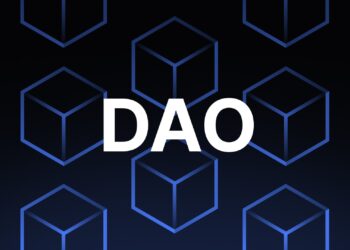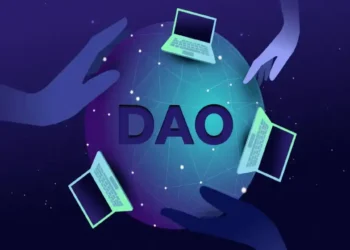Last updated on November 13th, 2024 at 01:15 pm
Introduction
DeFi is revolutionizing financial systems all over the world by giving mainstream financial services an alternative that is more transparent, accessible, and open source in nature. Most of the underlying infrastructures of DeFi are blockchain-based; hence, users can access financial services such as lending, borrowing, and trading without intermediaries.
Although DeFi is still relatively new, it is changing fast with innovations that are presently rewriting how people think about finance. Below, we go through some key trends and developments that are set to shape DeFi’s future in this regard-as a way of answering just what the road ahead has in store for this fast-evolving ecosystem.
1. Layer 2 Scaling Solutions
As DeFi platforms grow in popularity, their infrastructures need to accommodate these increasing demands on their systems-serving their user bases more efficiently, affordably, and even reliably. The immediate answer to scalability comes in the form of Layer 2 solutions.
1.1 Types of Layer 2 Solutions
- Optimistic Rollups: Optimistic rollups allow transactions to be processed off-chain with their verification happening on the main blockchain. This allows much more to be processed without congestion of the main network, hence faster processing time and lower fees.
- Zero-knowledge rollups, better known as Zk-Rollups, cumulate several transactions into one and generate a proof that is sent to the main chain. This helps in reducing gas fees, further helping in improving scalability for DeFi platforms. The proof makes sure that the transaction is valid without showing any details of the transaction, hence helping in efficiency and privacy.
1.2. Layer 2 Solution Benefits
Reduced Transaction Fees
High transaction fees have been one of the major obstacles to entry for users on networks such as Ethereum. Layer 2 solutions make DeFi more inclusive for users on a smaller budget by offloading transactions.
Greater Adoption and Inclusion
Speeding up and making transactions cheaper, Layer 2 solutions make DeFi more alluring to new users, especially for those who come from regions that enjoy limited access to traditional financial services.
2. Interoperability Across Blockchains
One of the most significant barriers in DeFi has to do with how the majority of protocols operate on an isolated blockchain. This drastically reduces their potential reach and liquidity. Interoperability lets different blockchains interact with each other smoothly; hence, this is helpful to be more connected within the ecosystem. In this regard, the following can be considered:
2.1. Cross-Chain Bridges and Protocols
- Polkadot and Cosmos: Each of these blockchains is specifically designed to bridge various blockchains together. They will let assets and data move between chains. So, this lets users benefit from the unique strengths of each blockchain and not be forced off their chosen DeFi platform.
- Wrapped assets: Technologies like wrapped tokens enable assets from one blockchain to be used on another. For instance, wrapped Bitcoin (WBTC) allows Bitcoin to be used within the Ethereum network, enabling BTC holders to participate in DeFi activities without selling their Bitcoin.
2.2. Increased User Experience and Flexibility
- More Liquidity: As interoperability offers the possibility for users to move assets across chains, interoperability enhances options and liquidity among platforms, accordingly allowing for more fluid and deeper trades, access to more ample financial products.
- Larger Network Effects: More interoperable DeFi protocols create stronger network effects, onboarding new users and developers further out on the innovation curve, and with it, space adoption.
3. DeFi Meets Traditional Finance (TradFi)
This is attributed to the fact that several benefits are viewed by financial institutions that may accrue from blockchain-based finance. The integration of DeFi into TradFi will mark a gaming moment when the benefit of a decentralized system meets stability and regulation in traditional financial frameworks.
3.1. Onboarding Institutional Investors
- Tokenized Assets: These are, in turn, traditional assets such as real estate and stocks that can be tokenized and made accessible through DeFi platforms. This option allows institutions to tap into liquidity while still retaining a form of digital ownership, thus hooking up the so far fragmented physical and digital asset markets.
- Institutional-Grade Custody Solutions: Institutional investors would want DeFi to provide solutions in secure custody-the kind that meets regulatory standards. Institutional-grade custody solutions are designed to safely store such assets and solve one of the most important pain points preventing institutions from entering the DeFi space.
3.2. Regulatory Compliance and Hybrid Models
Know Your Customer (KYC) Protocols
A number of DeFi platforms are integrating KYC protocols into their operations in an attempt to attain regulatory compliance. This may sound opposite to the open nature of DeFi, but it would make room for institutions that might join the system under a compliant framework, hence balancing privacy with regulatory requirements effectively.
Hybrid Finance Models:
Hybrid finance, or “CeDeFi,” borrows elements of both decentralized finance and the mighty power of centralized oversight, which would allow DeFi to function within the confines of regulations. This might be one way by which DeFi could gain mainstream acceptance and trust among traditional investors.
4. Algorithmic and Stablecoin Innovations
Stablecoins are digital currencies pegged to stable assets such as the US dollar. The main reason they show up in DeFi is the need for stability in this otherwise very turbulent market. Recent inventions of the algorithmic stablecoin are really pushing the boundaries and creating a new breed of self-regulated digital currencies.
4.1. Algorithmic Stablecoins
Self-Stabilizing Mechanisms
Algorithmic stable coins depend on smart contracts for supply and demand regulation, where the supply automatically gets adjusted to meet the requirement of value stability. This removes any need for central backing and makes them one of DeFi’s unique inventions.
Perils and Stability Issues
Algorithmic stablecoins appear significantly more promising; all the same, they are in development and can be susceptible to price swings in case of powerful market turbulence. Developers make their corrections to the algorithms so that they will be much more reliable against market fluctuation.
4.2 Asset-Backed Stablecoin Expansion
Diversifying Collateral
Most stablecoins, such as DAI, are collateralized by more than one type of cryptocurrency to reduce their dependency on the value of one asset. In effect, this can provide more security to the DeFi ecosystem by reducing exposure to a wide variety of risks set by one asset.
Global Payment Solutions
With the development of technology, stablecoins are increasingly used for cross-border payments, remittances, and other financial transactions. Globally available and easy to use, they have become very appealing for the huge number of unbanked people around the world, as well as an enhancer of financial inclusion.
5. Decentralized Autonomous Organizations in DeFi Governance
DAOs are a core component of DeFi, giving users the power to participate in platform governance through decentralized voting systems. As DeFi platforms seek to decentralize further, DAOs play an increasingly crucial role in decision-making.
5.1. Community-Driven Governance
Voting mechanisms and proposals
DAOs enable users to propose and vote on key decisions. This means the voice of the community may guide the development of the platform. Voting rights are very often correlated with the number of governance tokens held in possession, which therefore aligns incentives among the various stakeholders of the platform.
Transparency and Accountability
The benefits that DAOs can offer include allowing DeFi platforms to operate in a very transparent manner, where every decision regarding governance stays on the blockchain. This is going to aid in much-needed accountability, which will be quite essential in this space that more and more users and institutions are about to start engaging with DeFi protocols.
5.2. Challenges and Future of DAO
Participation Assurance
While DAOs have returned power to the user, the challenges in participation assurance pertaining to voting are there. New innovative incentive structures are under research that can make participation enhance in governance decisions.
Regulatory Uncertainty
The more DAOs grow, the bigger the question regarding their legal status and adherence to regulation. Finding a way to handle regulatory challenges will be important for their further, uninhibited operation in different jurisdictions.
6. Privacy Solutions and Enhanced Security
Privacy and security are actually key to the success of DeFi, especially when it’s growing and becoming a target of sophisticated cyber-attacks. Innovation in privacy protocols has been serving the needs of confidentiality while not compromising on transparency.
6.1. Privacy-Preserving Protocols
Zero-Knowledge Proofs (ZKPs)
ZKPs enable verification of transactions without actually showing their underlying details. This increases privacy but still keeps trust on the network intact. Examples of such protocols are Zcash and Tornado Cash that have integrated ZKPs into their systems to offer DeFi solutions with enhanced privacy.
Privacy Coins and Protocols
Privacy coins, such as Monero, provide for anonymous transactions, and DeFi protocols centered on privacy give more powers of data control to the user. The more people exercise their right to privacy, the more these types of technologies will be used to make DeFi platforms more inclusive.
6.2. Security Enhancements
Audits and Bug Bounty Programs
Security audits are already the standard among most DeFi platforms, needed to find and fix vulnerabilities so they could not be exploited. Bug bounty programs incentivize active developers to find security issues and report them for better security of DeFi for all users.
Multi-Signature Wallets and Insurance Protocols
Multisignature wallets, requiring more than one signature for a transaction to go through, are an added layer in the security of users in DeFi. Furthermore, insurance protocols are built with the sole purpose of protecting users against losses through hacks or smart contract failures-developing a degree of confidence among users of the DeFi ecosystem.
Conclusion
As the concept of DeFi further develops, these trends and innovations will set the future of the industry. From scalability solutions and interoperability to new governance structures and privacy protocols, DeFi is on track to becoming more inclusive, secure, and mainstream.
As these trends unfold further, DeFi has the potential to upend how global finance works by providing a truly decentralized, transparent, and user-centric financial universe. If DeFi is ever to live up to such a promise, it needs to keep innovating at a proper balance between security, regulatory compliance, and user friendliness. Anyways, the road ahead is circuitous but promising, and DeFi’s impact on global finance might just turn out to be one of the defining technological shifts of our era.
Bio of Mr. Hesham

Hesham was ranked #39 out of the top 50 investors by Forbes in 2018, based on his investment record and successful exits. Hesham is an angel investor, mentor, and board member for numerous companies. With over 25 years of experience in leading multinational businesses, he has invested in over 400 startups and co-founded more than 80. Passionate about building innovative startups that simplify complex challenges. Hesham’s deep expertise spans various industries, including Web3, artificial intelligence (AI), technology, and finance.
If you want to read more articles like this, visit DeFi Planet and follow us on Twitter, LinkedIn, Facebook, Instagram, and CoinMarketCap Community.
“Take control of your crypto portfolio with MARKETS PRO, DeFi Planet’s suite of analytics tools.”





















